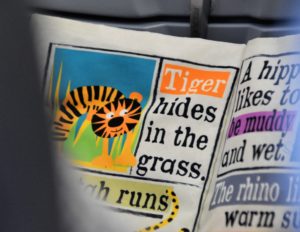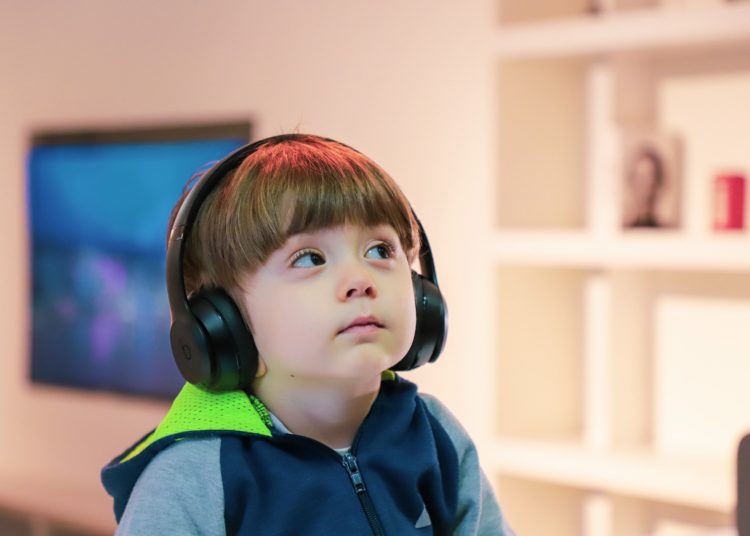Using Authentic Material with Young ESL and EFL Learners.
Photo taken by Alireza Attari from Unsplash
Gifs: https://giphy.com/
It is hard to talk about using authentic material without mentioning my own EFL learning process. As you know, I’m not a native English speaker; on the contrary, I was born in Latin America and started formal English lessons at the age of 13 or 14. At that time, this experience seemed pretty easy, I was good at reading, grammar, and vocabulary exercises and I felt successful because I was able to write and speak in class. However, there was one skill that was not easy to develop at all, this skill was listening.
I don’t understand a single word….why?
Photo by Mpumelelo Macu from Unsplash

Listening to authentic material as an ESL learner was very challenging to me since I had never been consistently exposed to movies or any other element that included natural or real English. I was just used to listening to certain “simple” exercises from the coursebook and I stressed out every time I was asked to do a fill in the gaps exercise of a song or a film. From that time, and for many years, listening turned into my worst nightmare, and although I did my best and tried to understand the words said in movies or music I barely could understand something.

As I said before, back in the 90s, yes! Back in the 90s; I didn’t have Netflix or Youtube and although in my country, it was difficult to find authentic listening material to study with, I managed to find a way to improve. My strategy consisted of listening to my favorite American or British songs and make their transcriptions. It was hard at first but with time I improved.

A few years later, I started college and as some of you already know, I decided to study Modern Languages. Once more I was an ESL student and challenged to listen and understand a wide range of content in English. This time it was much more frustrating since I was given scores and I had to approve really important tests and assessments.
It was here when I started to practice listening in my free time, I used to listen to really boring international news and borrowed CDs and cassettes, yes cassettes; from our university library to practice listening every day. I won’t deny that it helped me a looooot and I was able to obtain average grades in my examinations but I was still not satisfied, I was in panic every time I had to speak to a native speaker and I didn’t like that feeling at all.
Photo by JESHOOTS.COM from Unsplash

Suddenly, something amazing happened to me; a new decade arrived and with it, many paid international channels came into my life. I discovered the 2000 sitcoms, yes 2000! These sitcoms were completely broadcasted in English and they turn into a game-changer in my life. It was here when I started to enjoy and understand real spoken English and vocabulary.
Long story short….

Sitcoms were the type of material I had always needed, they were something I enjoyed, something I wanted to watch, and a perfect way to practice listening as an EFL student. At this point, I reflected and realized how my learning process could have been different if I had had the chance to listen to much more real English before. How easy could this process have been if I had had the opportunity to listen to more authentic language when I was starting my learning process? And it was here when I started using authentic material with all my students.
Photo by Jonas Leupe from Unsplash

But Adriana, you say: “this is your experience, you were a teenager, what about children, should I use authentic material with my young ESL and EFL learners or not?”
Should I use authentic material with young ESL and EFL learners?

Well… the answer is YES, OF COURSE! You must use it as often as you can because it not only improves listening skills but also, expands their vocabulary, grammar knowledge, pronunciation, and more important than anything else, it helps children to build confidence.
I use authentic material daily, I usually introduce my lessons not only with songs but also with video reactions of native children speaking about meaningful topics; some series excerpts or episodes. I also use videos in which children tell jokes, laugh, and interact with others. I have noticed how my learners improve in a slow but self-assured way. For many of them listening to native speakers might be frustrating at first but as they do it almost every day in my class, it turns into something common and pleasant.
The following is a nice authentic material activity you may use in your listening lessons:
Should I stop using the textbook listening material with young ESL and EFL learners?
“Ok Adriana, so …should we avoid the unnatural recorded conversations we find in our textbooks?” Of course not, this type of material helps children notice, practice, and understand the target language. They are extremely useful when consolidating grammar structures, vocabulary, proverbs, and idiomatic expressions. In my opinion, both are a must if you want to observe real improvement in your children.
In my next post, I will be sharing with you some valuable pieces of information about the criteria you must bear in mind when choosing authentic material for young learners.
See you in that post!








Discussion about this post